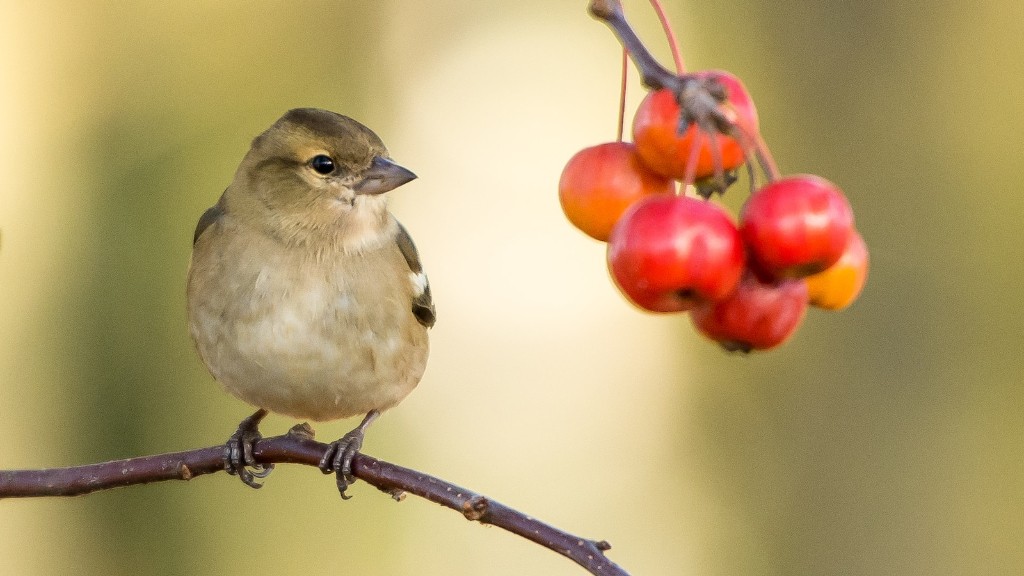Appearance of Palm Trees
Palm trees are the classic image of the tropics. They are tall, distinctive trees with multiple fronds of fan-shaped leaves. They often have a tall, central trunk topped off with a crown of large fronds. Palms are found throughout tropical and sub-tropical regions, most commonly in the coastal areas. Depending on the species, palm trees can also grow in large, dense forests or small clusters on sandy soils.
The most common palms have feather shaped leaves. The leaves may be smooth and broad or narrow and irregular. The leaves can grow up to seven feet long in some species and have ragged, split ends. Palm trees also have smooth, slender trunks with a variety of colors including shades of brown, green and yellow. The trunks of some species have bristles, while others have smooth, almost fuzzy surfaces. In some cases, the leaves also have a wax coating.
Identifying a Palm Tree by its Frond Pattern
One of the easiest ways to identify a palm tree is to look at the shape of its fronds and their pattern. Palm fronds are typically arranged in either a pinnate or palmate pattern. In the pinnate pattern, the fronds form a feather-like pattern with a central line from which the leaves and leaflets radiate out in a symmetrical pattern. In the palmate pattern, the fronds are arranged in a single plane from a central point.
When viewed from above, the pinnate palm trees can look like a feather with its many leaflets radiating out in a symmetrical pattern. In this way, the frond pattern can help identify the palm tree’s species. Palm trees with the palmate pattern are much easier to identify because their leaves are arranged in a single plane and the pattern is unmistakable.
Identifying a Palm Tree by its Stems
In addition to the frond pattern, another way to identify a palm tree is by the shape of its stems. The stems of a palm tree can be either single or multiple. Single stemmed palms have a single trunk rising from the ground. These palms typically have large fronds that can reach heights of up to 50 feet. Multi-stemmed palms, on the other hand, have multiple trunks that are connected at the base. These palms typically have smaller fronds and can reach heights of up to 30 feet.
Identifying a Palm Tree by its Leaves
The leaves of a palm tree can also be used to identify it. The size and shape of the leaves vary depending on the species, but they are generally large, broad and either feather-like or fan-shaped. The color of the leaves can also be used to help identify a palm tree. Some species have green or yellow-green leaves, while others have leaves that are deep purple, red or even black.
Identifying a Palm Tree by its Fruits
Finally, palm trees can also be identified by their fruits. Depending on the species, palms may produce a variety of fruits, from dates to coconuts. The shape, size and color of these fruits can help identify a particular species. Dates, for example, are produced by date palms. These are oval-shaped and reddish-brown in color. Coconuts, on the other hand, are produced by coconut palms. These are rounded and have a hard, brownish outer shell.
Other Characteristics of Palm Trees
In addition to the visual characteristics that can help identify a palm tree, there are also a few other characteristics that can be used to help distinguish it from other trees. Most palm trees have tough, leather-like leaves that can withstand wind and drought. They also have thick, waxy trunks with a pattern of spiraled ridges. Palm trees also typically produce large, bright flowers that have a distinctive sweet fragrance.
Common Varieties of Palm Trees
There are many different types of palm trees. Some of the most common varieties include the coconut palm, date palm, royal palm, peach palm and kentia palm. Coconut palms produce the large, hard-shelled fruit used for making coconut milk and other products. Date palms produce fruits that are typically sweet and are used for many culinary purposes. Royal palms are tall, slender trees with fronds that can reach heights of up to 50 feet. Peach palms produce edible fruits that are sweet and juicy. Finally, kentia palms produce a starchy fruit that is often made into flour.
Types of Palm Trees Around the World
Palm trees can be found in tropical and subtropical regions around the world. In the United States, palm trees are grown in the warmer states near the Gulf of Mexico and southern California. In South America, palm trees are abundant in the countries of Brazil, Argentina and Colombia. In Africa, palm trees are found in many countries including Ivory Coast, Ghana, Senegal and Nigeria. Palm trees are also very common in Southeast Asia, in countries such as Thailand, Indonesia and the Philippines.
Uses of Palm Trees
Palm trees have a variety of uses. The most obvious is that they are a source of food and shelter. The fruits of some species, such as coconuts and dates, are edible and can be used in a variety of culinary applications. Other species can also be used to make cooking oil, syrup, sugar and wine. Palm leaves are also used for weaving mats, baskets and other products. The trunks of the trees are often used for construction and can be used to make bridges and small buildings. Finally, palm trees can be used to make furniture and can even be used to make shelter for humans and animals alike.


